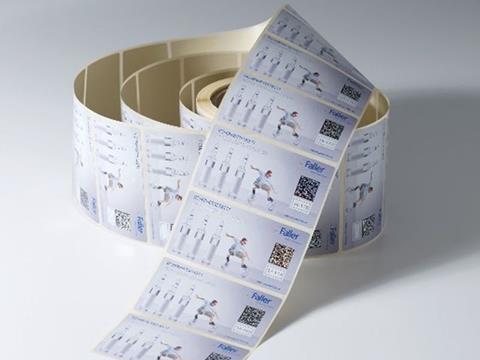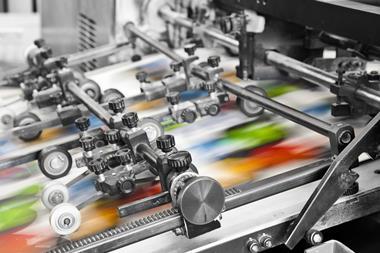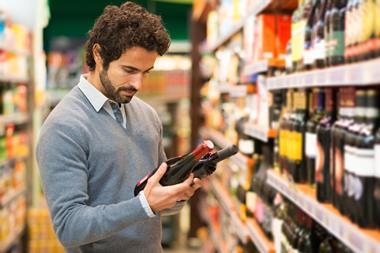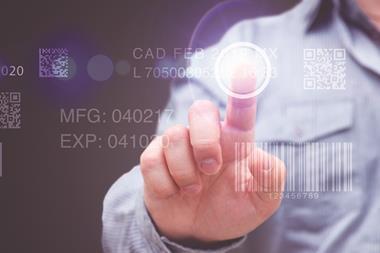
But this can all be prevented. There are now numerous ways to protect both the consumer and the company’s own brand, while standing up to counterfeiters. Beginning in February 2019, all prescription medicinal products in the EU must be provided with a security feature allowing wholesalers and pharmacies to verify product authenticity.
The security feature – in the form of a 2D data matrix code – aims to guarantee packaging traceability spanning the entire supply chain. Along with the product code to identify the medicinal product and the maximum 20-digit serial number, the code includes a national reimbursement or identification number, the batch number and expiry date. In addition to the machine-readable code version, the product code as well as the serial and reimbursement number must be in plain text and displayed on the packaging in a format that can be read by humans. A tamper-evident packaging seal completes the directive’s requirements.
A highly complex process necessitates extensive know-howWhat sounds comparatively simple is in reality a highly complex process that is influenced by many variables. Along with the product to be coded – folding carton or adhesive label – their materials, the code to be printed, the printing technology as well as the operating speed of the packaging line play a crucial role during serialisation. All parameters must be perfectly aligned to guarantee pharmaceutical security through the use of legible code, without allocating duplicate serial numbers on the packaging. Only then can the required print quality of at least 1.5 in line with the ISO/IEC 15415:2011 standard and thus Grading C be achieved.
But not every folding carton board can be printed with every printing method equally well. Another method may have to be utilised depending on the cardboard material used and its finishing. Also, the code itself determines the choice of material and the printing method. The 1D code (China code), for example, does not easily allow for defects in the print image. If a line is missing or if the bar-space ratio is not correct, the meaning of the code will change. For the 2D data matrix code required for anti-counterfeiting protection by the new EU directive, up to a quarter of the code can be missing, without information concerning the content being lost. The code can still be completely read out.
The serialisation of adhesive labels is even more complex. While a manageable number of the carton board grades available on the market are used for a majority of pharmaceutical packaging for folding cartons, and inkjet or laser printing are primarily used as printing methods, the material diversity of the paper and plastic films used for labelling is significantly greater. Additionally, the printing methods are more numerous. Even the manufacturing process for labels is substantially different to that used for folding cartons. While the punched boxes are separated for the coding process, the labels run through the printer from a roll. The film must be held under tension during printing. It is therefore slightly stretched for this purpose and then returns to its original shape. This needs to be taken into consideration with regard to the legibility of the printed code. Moreover, the code on adhesive labels must remain completely machine-readable, if the label is positioned on a bottle for example.
Two technologies, one single codeA recent project at August Faller GmbH & Co. KG called for great expertise and creativity in both areas. For a customer who provides veterinary products to China, the serial QR code required by the Chinese authorities had to be printed on both the folding cartons and the labels. In addition to the serial number, the code contains the product name, a registration number, the manufacturer and a telephone number for emergencies – and all this in Chinese characters. The project faced two major challenges. On the one hand, the camera system verification had to be taught to read Chinese characters. And on the other, the same serial coding had to be applied using two different technologies on two different products. The coding for the folding cartons was performed using UV inkjet printing at the Pharma Service Centre in Waldkirch. The labels were coded in the Schopfheim plant using digital printing which is characterised by multi-colour capability and high image quality. As a result, it was an ideal option to apply easily legible Chinese characters. Alternatively, adhesive labels can also be serialised during the thermal transfer printing process in Schopfheim. Here, thermal transfer printing is particularly suitable for the Belgium label.
Coding folding cartons flexiblyFaller has been printing various codes on a wide variety of folding cartons at the Pharma Service Centre in Waldkirch for several years now. The company has great expertise in this field and scores top marks with both a quick application of the code – the system operates at a speed of up to 60 m/min – and a high quality of the printed image. The coding system consists of a UV inkjet printer based on DOD technology (Drop On Demand) with a resolution of 360 dpi and environmentally friendly LED drying technology. Coding, serialisation and verification, as well as the printing process, all run on this machine. The camera-based, in-line inspection reads the grading following the ANSI standard and enables codes that do not meet the required grading to be exported. Testing of print quality is carried out in the subsequent process step in accordance with the ANSI/ISO standard. The minimum grading required for the EU’s 2D data matrix code is Grading C.
The variable data can be applied as a 1D barcode or as a 2D data matrix code, in plain text. The system processes grammages from 230 to 600 grams. The width of the coding field can be up to 72 mm. The special feature is the high-level of independence from material quality that arises through the use of UV print systems. All common styles for the folding cartons can be printed. The maximum width of the blanks is 450 mm. Flexibility is also self-evident in the positioning. The code can be printed on the folding carton at any desired position. And quantity does not play a role in the process: Faller prints both small and large volumes and can implement varied country requirements for serial coding. Faller has integrated an in-house software to manage the numbers internally which, in turn, guarantees the uniqueness of each code number.
Consulting and servicesAugust Faller GmbH & Co. KG is pleased to share its expertise with its customers. The leading provider of pharmaceutical secondary packaging develops the best combination of code, material and printing technology with them in order to code and package tamper-proof drugs. By outsourcing the packaging and/or coding processes to Faller, customers in the pharmaceutical industry can considerably reduce their own workload and accordingly, costs and time.
More info:









